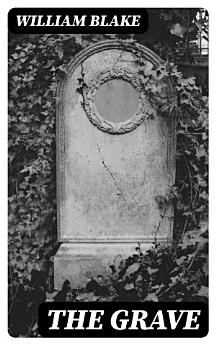The Grave: With the Original Illustrations by William Blake
William Blake
May 2022 · DigiCat
Ebook
48
Pages
family_home
Eligible
info
reportRatings and reviews aren’t verified Learn More
About this ebook
William Blake's "The Grave" is a profound exploration of mortality, spirituality, and the human condition, encapsulated in a unique blend of poetry and visual art. Written in the late 18th century, the work exhibits Blake's signature symbolic language and vivid imagery, which challenge conventional notions of death and the afterlife. The interplay between life and death is depicted through haunting verses that delve into themes of love, loss, and eternal connection, all set against a backdrop of Blake's visionary cosmology. It offers a rich narrative that resonates with the Romantic era's preoccupation with nature and the sublime, while simultaneously critiquing societal norms surrounding death and fate. William Blake (1757-1827) was a visionary artist and poet whose works frequently engaged with the tensions between the spiritual and the material world. His own life experiences—including the early loss of loved ones, deep personal convictions about the nature of the soul, and a profound connection to the mystical—guided Blake's creative process. The struggle for personal and artistic freedom in a constrained society heavily influenced his writing, a theme vividly embodied in "The Grave." This extraordinary work deserves a wide readership for its lyrical beauty and profound insights into existential themes. Readers interested in exploring the depths of human emotion and the complex relationship between life and death will find "The Grave" to be a powerful and enlightening experience. Blake's unique perspective encourages reflection on our own mortality and the enduring essence of love, making this a must-read for enthusiasts of Romantic poetry and spiritual inquiry.
About the author
William Blake (1757-1827), a towering figure in the history of poetry and visual arts during the Romantic Age, is renowned for his unique artistic vision and philosophical depth. Blake was not only a poet but also an accomplished printmaker, with much of his work engaging with themes of innocence, experience, and mystical thought. 'The Grave' is among his lesser-known productions, an illustrated series of designs for a poem by Robert Blair. While 'The Grave' is not a literary work crafted directly by Blake's pen, it remains vital within his oeuvre for his visual contributions. Blake's more famous works, such as 'Songs of Innocence and of Experience' (1789), 'The Marriage of Heaven and Hell' (1793), and 'Jerusalem: The Emanation of the Giant Albion' (1820), reveal his highly individual style characterized by symbolic complexity and prophetic tone. Blake's contributions to literature and visual art were not fully appreciated during his lifetime, but his influence has grown posthumously, marking him as a seminal figure in Western art and literature. Academics continue to study his work for its rich symbolism, revolutionary spirit, and its challenge to the societal norms of his era (Damrosch & Dettmar, 2005).
Rate this ebook
Tell us what you think.
Reading information
Smartphones and tablets
Install the Google Play Books app for Android and iPad/iPhone. It syncs automatically with your account and allows you to read online or offline wherever you are.
Laptops and computers
You can listen to audiobooks purchased on Google Play using your computer's web browser.
eReaders and other devices
To read on e-ink devices like Kobo eReaders, you'll need to download a file and transfer it to your device. Follow the detailed Help Center instructions to transfer the files to supported eReaders.








